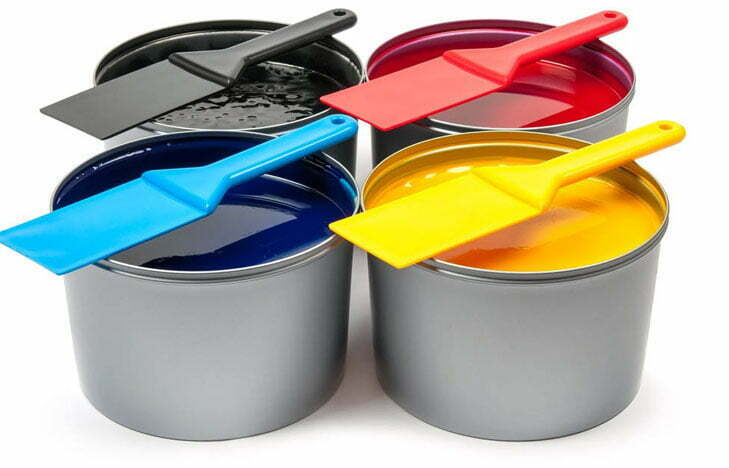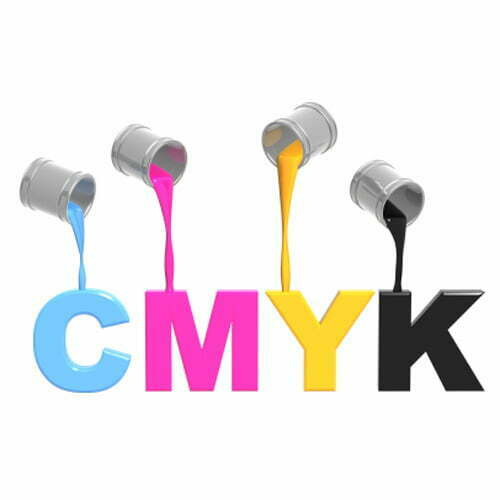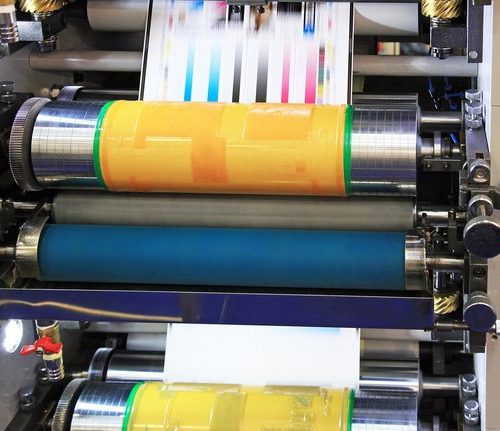Offset printing is a printing press that is pressed onto the surface of a rubber sheet, then the new rubber sheet is pressed onto the surface of the paper. This is to create the most optimal ink transfer (transfer from hard surface -> soft -> hard). So what are the bonding components of offset printing ink?
What is offset printing ink?

Offset printing ink is a body consisting of pigment particles that are evenly mixed in a carrier or binder. Pigments are used to create color and determine whether the offset ink layer becomes transparent or opaque. In the offset ink layer, the conductor must be changed, becoming a solid form with a viscosity of 40-100 Pa.s, high moisture content, stable with water to be able to stick pigment particles on the surface of the printed material. .
To better understand, you can see more information in the article What is Offset Ink .
The main binding agents in offset printing ink
The two main components of binder in offset printing ink are: Oil and resin. In particular, if printing leaflets, paper boxes, paper bags, the composition of linseed oil in the binder will be high, while in offset printing on roll paper, the main ingredient is mineral oil, in leaflet printing, the binding agent will be the main ingredient. results about 55-75%.
Oil
The type of oil used in offset printing ink is mainly linseed oil and mineral oil.
- Flax oil is a vegetable dry oil containing 4.5-6% unsaturated fatty acids (panmitic acid and stearic acid). During the printing process, these unsaturated fatty acids will combine with air oxygen => create an oxidation reaction that causes the ink film to dry.
- Mineral oil: This substance is often used in offset printing ink rolls for the purpose of printing books.
Besides, mineral oil can also be used to produce dry thermal ink, which is colorless, odorless, and boils at a temperature of 240 degrees – 270 degrees. If printing newspapers, mineral oil will boil at a temperature of 300-350 degrees Celsius.

Plastic
The second component in the main binding agent of offset printing ink is resin. Plastic can be processed from turpentine or synthetic resin, ankite resin. They all have the same property of being easily soluble in linseed oil and mineral oil, which is favorable for printing, and the chemical properties of the resin, after reacting with linseed oil, will form a dry ink film.
Nowadays, people mainly use alkyd resin to process into refined resin component in printing ink. Combining ankite resin with linseed oil will produce a glossy, fast-drying offset ink that increases the durability of the ink film and has a fast drying time.
The effect of oil and resin on printing ink is to form a protective layer when using printed products, which helps the plug in the ink to adhere firmly to the printed surface of the product.
Learn about Offset Printing Here .
Some other components of offset printing ink.
The basic composition of offset printing ink consists of a sleeve, a binder and an additive. Thus, in addition to the bonding agent made up of oil and plastic, offset printing ink also has two other components that are thermos and additives.
Posters
The quality and quantity of the thermos used are determined by the strength of the ink film. Seals in offset printing ink include 2 types:
- Colored cufflinks: is a type of thermos that is resistant to alkalis, acids and some types that are insoluble in organic solvents. This is also the most commonly used type in offset printing.
- Filler gasket: The advantage of filler plug in offset printing ink is to increase the brightness of the color tone, adjust the viscosity and limit dust accumulation during the printing process. Padded plugs are cheap, so they save printing costs and produce relatively cheap products.
Additives

The additives in offset printing ink include:
- Drying agent: helps to promote the drying of offset printing ink.
- Ink oil: adjust the viscosity, stickiness of printing ink.
- Anti-adhesive: helps prevent stains on the back of the print.
- Gloss enhancer: Usually varnish, to increase the gloss of offset printing ink film.
Thanks to the bonding agents, offset printing ink has the ability to adhere more firmly to the surface of the printed product and make the product more durable over time. It can be said that if there is a lack of binding agents, offset printing ink will not be able to bring maximum efficiency when used, even if it is impossible to print products with sharpness and beautiful colors like the inherent advantages of this printing technique.
Please learn more:




